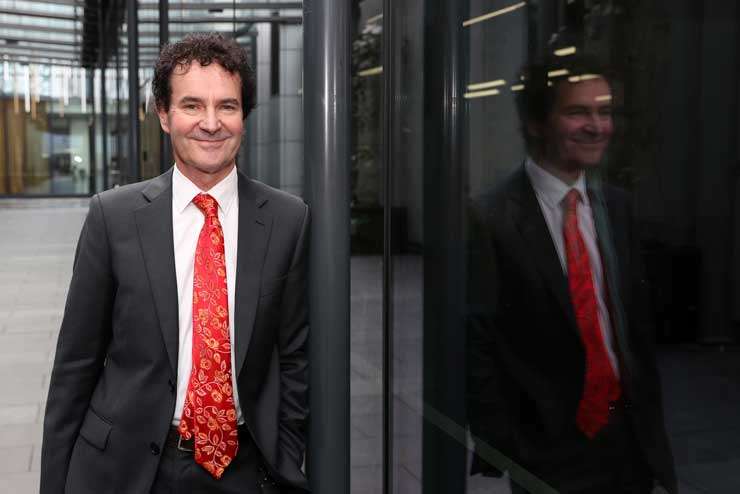ANALYSIS: A year ago the official cash rate set by the Reserve Bank was at a record low of 0.25%. Now it sits at 3.0% and looks highly likely to hit 4% by the end of the year, after which further rises may not occur as long as some solid signs emerge of inflation heading back down again.
Because of the rising cash rate the usually very popular two-year fixed mortgage rate has risen from a low of 2.49% to the current 5.39%. I could stop writing here and you would be left with the impression that because the near 3% rise in this fixed rate matches the near 3% rise in the cash rate that the two move together.
On that basis you’d be left thinking that a further 1% rise in the cash rate to 4% will mean the two-year fixed mortgage rate will go to about 6.4%. But that is not how things work. In fact, despite the cash rate going up we may well have seen the peak in the two-year rate of 5.69% back in the middle of June.
Why is this fixed rate (and all the others as well) falling when monetary policy is being tightened? And why won’t further rises lead to higher fixed rates? Think of it this way. The investors who lend money to the banks at a two-year fixed rate to in turn lend out fixed two years to you and I face an alternative. They could also place the funds into a short-term rollover investment tied closely to the Reserve Bank’s cash rate.
Start your property search
When they decide what to do they start by forecasting where they think the cash rate will go for two years. When investors were doing that exercise in June and the months before, they were very scared about high and rising inflation and lack of credibility of the central banks as inflation fighters after keeping monetary policies much too loose last year and causing a lot of the currently high inflation.
As a result, the investors anticipated the likes of our Reserve Bank taking the cash rate to as much as 4.7% and not being able to drop it for a long time because of entrenched inflation. Their prediction of the average cash rate for the next two years was fairly high and that caused them to demand a high rate if they were to lend fixed for two years.
But since then three things have changed. First, central banks have raised rates rapidly and made very strong statements regarding their determination to make sure inflation is brought back down. They have re-established their credibility as fighters of high inflation and there is faith that they will succeed and won’t still be playing catch-up monetary policy tightening in the second half of 2023.
Second, a lot of data have appeared around the world showing rapidly weakening economic conditions in the likes of the UK, Europe, United States and China. Slowing growth and recession always lead to falling inflation and that means interest rates set by central banks being cut earlier than previously allowed for.
Third, some of the key drivers of inflation have been backing off. International freight costs are falling as are prices for commodities ranging from oil to food and minerals.

Independent economist Tony Alexander: “Slowing growth and recession always lead to falling inflation.” Photo / Fiona Goodall
Now, investors thinking about where cash rates will go over the next two years don’t think they will reach 4.7% here and maybe won’t go much above 4% if they do at all. In addition, these investors see a good chance that our Reserve Bank will start cutting interest rates before the end of 2023.
The upshot is that investors have been happy to demand less compensation from banks for lending them money at a fixed rate for two years (and three years, four years, etc.) because they now see lower cash rates than before.
Not only that, a rise in the cash rate to 4% is fully factored into current fixed rate pricing. As the cash rate gets pushed higher in the next three months, fixed lending rates will not go up as well – except maybe the one-year rate which feels a tad low at the moment. Floating rates will definitely go up.
The upshot of all that I’ve written above is this. As you see predictions of the Reserve Bank raising its cash rate another 1%, you will be invited by the headlines to believe that fixed rates will also rise another 1% and the housing market will be newly slammed. It will not because they will not. The only interest rate pain left is for people who already have a mortgage and are rolling into a rate higher than the one they previously had. These are people who already have a house and 99% of them are not in the market looking for another one. For the many tens of thousands of Kiwis who are, the impact of factoring in higher fixed rates has already been felt – and now that impact has eased 0.2% - 0.4% since June. Food for thought as you contemplate the housing market’s progress into the start of 2023 when things will likely look quite different, especially now my survey of mortgage advisers with mortgages.co.nz tells us that first home buyers are re-entering the market.
- Tony Alexander is an independent economics commentator. Additional commentary from him can be found at www.tonyalexander.nz



















































































